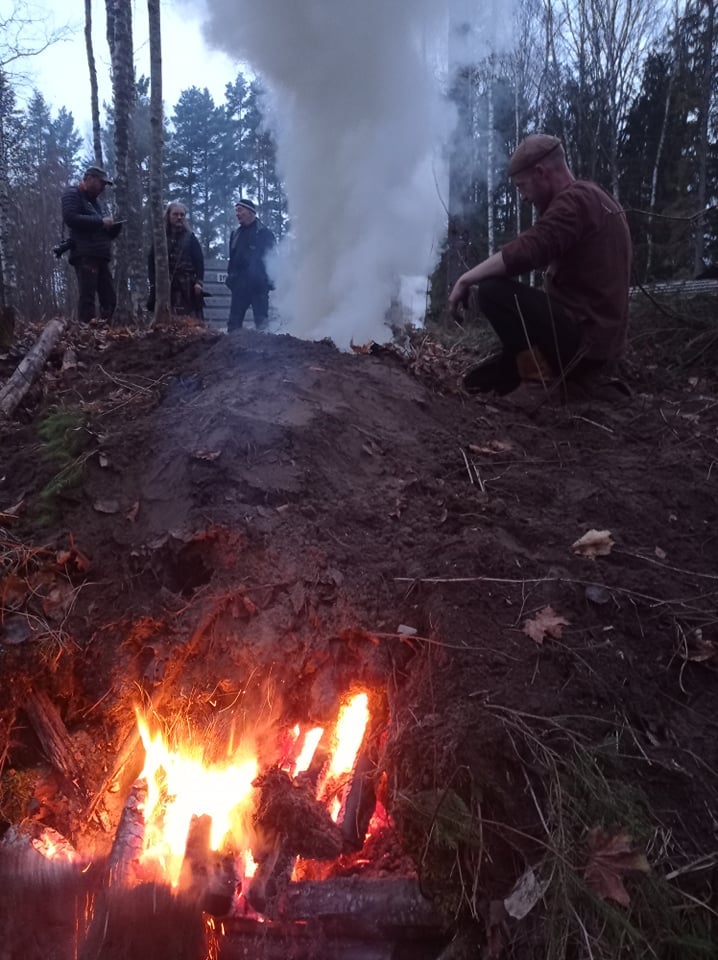This is the start of a long and complex process: The transformation of bog ore into rivets for our Gokstad ship replica.
Text: Einar Chr. Erlingsen

Ample supplies of coal and iron were prerequisite for the industrial revolution, as it was a thousand years earlier when the Vikings built their remarkable ships. This is the backdrop for a new research project headed by Vikings in Vestfold and Telemark (ViVT), and with Oseberg Viking Heritage among the participants. Project manager and initiator is Jens-Erik Wielsgaard Langstrand, with the county council as main sponsor.
The aim of the project is to establish working methods for calcining bog ore, production of charcoal and transforming the raw iron into high quality iron.
“There has of course been research made on Viking iron production already, but with varying results,” says Jens-Erik. “The main problem is that there has been little documentation. Right now, we´re searching for a master student to join the project.”
Already started
Two preliminary steps have already taken place with assistance from Guvihaug Viking Association in Telemark. The members have been busy collecting large quantities of bog ore for iron production, as well as wood for production of charcoal.
In September, bog ore was roasted in a specially built calcining kiln, which is the first step in transforming bog ore into iron. And in November, some 12 cubic meters of charcoal was successfully produced.
Open process
Next step will follow in the spring, when ore will be transformed into usable iron, then to be hammered out and made into ship rivets by our young blacksmith Kristoffer Holmvik.
Exact date and place have yet to be decided; either at the Midgard Viking Centre or at Oseberg Viking Heritage´s work station in Sandefjord. Whatever decided upon: the process will be open to access for the general public, in the same way as our shipbuilding yard in Tonsberg.
From ore to iron
This is an ancient process that has been practised in Norway for more than 2.000 years. The resulting iron was exported in large quantities to most of Northern Europe, especially during the Roman period.
More information: https://www.facebook.com/groups/1917746938398572

